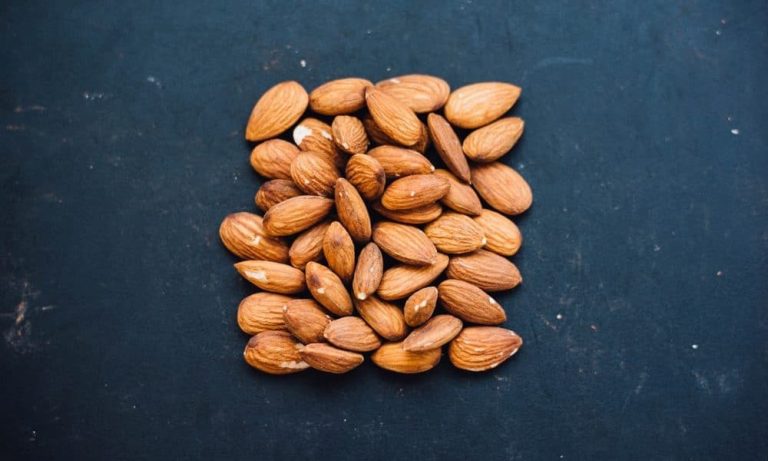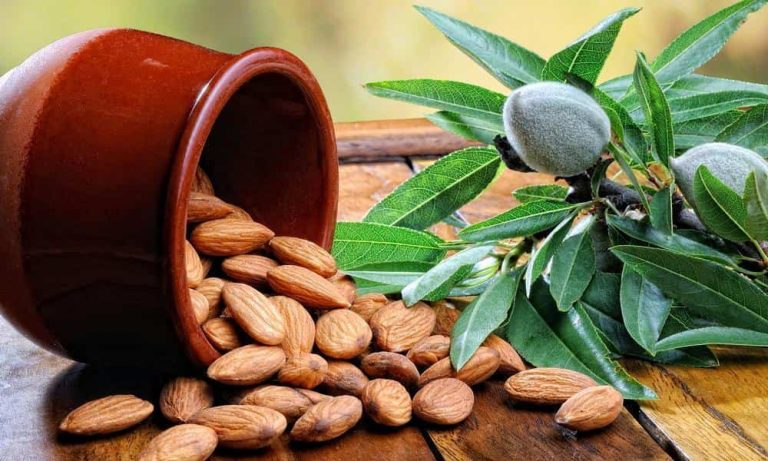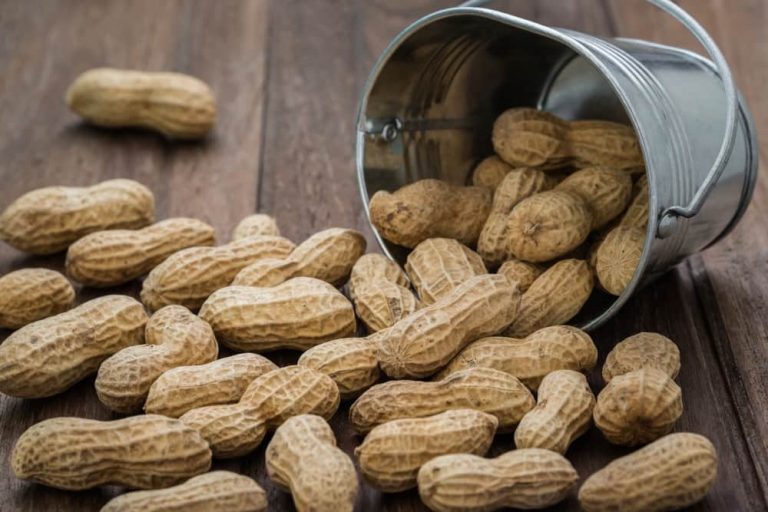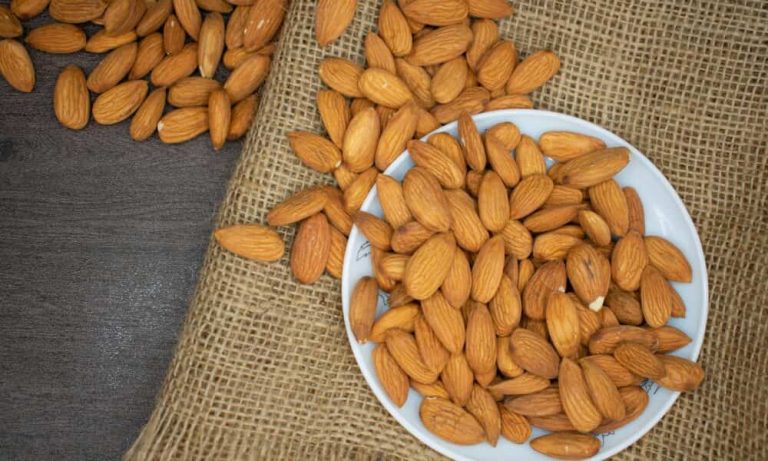The benefits and nutritional benefits of almonds versus peanuts are a very interesting topic. Almonds and peanuts are both rich sources of beneficial vitamins and minerals, and both contain roughly the same amount of micronutrients.
There are 170 calories, 6 grams of protein and 3 grams of fiber in one ounce of dry roasted almonds. The same amount of peanuts has a calorie content of 166, approximately 7 grams of protein and 2 grams of fiber.
However, we also know that peanuts contain higher amounts of B vitamins than almonds. However, when it comes to vitamin E and minerals in general, almonds are the best.
Fats that are good for you are found in almonds and peanuts: Both almonds and peanuts have the same amount of fat per serving: 15 grams for almonds and 14 grams for peanuts, making up the total fat in a serving.

This fat is made up mostly of heart-healthy unsaturated fats, which reduce the risk of cardiovascular disease by lowering blood cholesterol levels and fighting inflammation.
Unsaturated fats are a healthier alternative to saturated fats for the heart. In order to maintain heart health, experts recommend that you get between 20 and 35 percent of your daily calories from fat, with as many of these calories as possible coming from unsaturated fat.
Levels of certain vitamins such as B and E found in almonds and peanuts are comparable but not identical. In just one ounce, almonds provide 45% of the daily value of the antioxidant vitamin E, so if you feel like you might be getting more of this nutrient, you should increase your almond intake.
On the other hand, peanuts contain more B vitamins such as folate and niacin than other nuts.
A single one-ounce serving of peanuts can provide you with about 24 percent of the recommended daily intake (RDA) for the vitamin niacin and 10 percent of the RDA for folate. The amount of these useful vitamins in almonds is less.
Magnesium content is good in both. However, the level of magnesium in almonds is slightly higher than other nuts. Peanuts and almonds both have the same amount of zinc, but almonds have twice the iron and five times the calcium of peanuts.
The jury has decided that almonds are nutritionally superior to peanuts because almonds have a higher concentration of iron, calcium, magnesium and good fats than peanuts. Dietitians and nutritionists are available for advice if you have any questions or concerns about a particular topic.

Price of almond vs peanut
Peanut is an annual crop and it is relatively easy to grow. But almonds, in contrast to peanuts, require the maturity of the tree to produce nuts. So this is one of the reasons for the price difference between the two.
Almonds can take five years or more to produce. This is a significant amount of capital that is waiting to be returned. In addition, peanuts are more productive than tree nuts and produce more nuts per hectare.
Additionally, a groundnut field damaged by weather or drought conditions can be replanted the following year, and in some cases even the current year. A tree can take many years to grow and does not start with a seed.
The term “nut” does not properly apply to peanuts. They grow in a way that is significantly different from true nuts because they are legumes.
All kinds of nuts, including almonds, hazelnuts, walnuts, etc., are all produced on trees. The harvesting process requires more manual labor and giant trees take up a significant amount of space.
Peanuts, on the other hand, come from a much more compact, bush-like plant. In fact, peanuts grow underground. The harvesting process is somewhat less complicated and usually involves removing the entire plant, which causes the peanuts to come up with the rest of the plant.
It doesn’t matter whether you eat almonds or peanuts because they both have almost the same macronutrients.
A 1-ounce serving of dry roasted almonds has 170 calories, 6 grams of protein, and 3 grams of fiber. The same amount of peanuts has 166 calories, about 7 grams of protein, and about 2 grams of fiber.

Nut size determines how many nuts are in a one-ounce serving of nuts. In common parlance, it’s called “a handful,” although the USDA Nutrient Database indicates that a 1-ounce serving is equivalent to 22 whole almonds and 32 peanuts.
This information is provided for those of you who want a more accurate measurement. The amount of different vitamins in almonds and peanuts is comparable but not the same.
If you want to increase your intake of the antioxidant vitamin E, almonds are the nut to go for. In a one-ounce serving, they contain 45 percent of your recommended daily allowance, often referred to as your RDA. That’s three times the amount you get from peanuts.
On the other hand, peanuts are superior to other foods as a source of B vitamins, especially folic acid and niacin. Peanuts provide approximately 24% of the recommended daily requirement (RDA) for niacin and 10% of the RDA for folate in one ounce serving. Compared to peanuts, almonds have only half the folate and a quarter the niacin.
There is not much difference in fat content. A 1-ounce serving of almonds has 15 grams of total fat, while the same amount of peanuts has 14 grams of fat. Unsaturated fats make up a significant part of the fat content. In the case of peanuts, this ratio is 80% and in the case of almonds, it is 88%.
By lowering blood cholesterol levels and reducing inflammation, these heart-healthy fats can help reduce the risk of cardiovascular disease. According to the Institute of Medicine, your calorie intake from fat should be between 20 and 35 percent of your daily total, with as much unsaturated fat as possible.

Almond nutrition benefits
Almonds have several uses and nutritional benefits. One of the most popular nuts in the world is of interest to many people. These nuts were admired in ancient Egypt and India. Ayurvedic doctors in ancient India apparently considered almond kernels to improve brain function, intelligence, and longevity.
The term “science of life” is Ayurveda. Almonds and almond slices are very useful for obesity, weight loss, joints, skin and hair of children. The benefits of almonds are widely known. You can eat peeled almonds. It is used in butter, milk and almond flour. It can be found in body lotions and perfumes.
Almonds reduce cholesterol. There are other notable benefits of this nut. High unsaturated fat This food contains fiber and unsaturated fats. There are antioxidant phytosterols.
Almonds contain vegetable proteins. One of the nuts known for its distinctive features is almonds. Properties that are useful for the health of the digestive system, skin and hair, as well as weight control and brain function
The fat in it is nothing to worry about. These nuts are high in calories, but are nevertheless recommended as a food to aid in weight loss. According to research, snacking on bittersweet almonds can help you feel less hungry and less likely to eat.

When a person follows a weight loss program, they consume fewer calories per day. Key heart-healthy nutrients found in almonds include arginine, magnesium, copper, manganese, calcium, and potassium.










